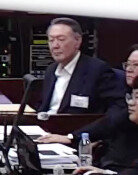Traces of Hamel in Korea

Jeju Island in 1653. Spervere, a Dutch merchant vessel run by East India Company, landed on the island after drifting on the waters for days. That was when Hamels life in this Far Eastern country began. Hamel and his 35 colleagues were just a group of castaways happy to find the land. No one knew at that time that the shipwreck would become a watershed event for Chosun. Hamel, like Hiddinkin year 2002, ignited keen interest in this country in the outside world. Europe, especially, was the hub of the world at that time.
It was his journal published 15 years later that sparked interest throughout Europe. The journal, published in English, German, French and Dutch, soon topped the bestseller list, introducing things about Chosun.
Hamel was on his way to Kyushu, Japan when he was shipwrecked. And he and his colleagues knew exactly where they landed. The royal family dispatched a translator to investigate those detained. To Hamels surprise, the translator was his compatriot, a man named Betefre whose trip ended in this opposite side of the world 26 years before.
And Hamel and his company, summoned by the royal family, began their inland trip at the south end of the peninsula, Haenam, Cheolla. During the 14-days trip, the company passed through Youngam, Naju, Jangsung, Jeong-eup, Jeonju and Gongju. At last, they reached Hanyang and went into Namdaemun Gate. They were invited to a royal banquet by King Hyojong, and stayed in the palace for two years with royal guards. Then they were accused of wrongdoings and sent to a remote area, Byungyoung in Chollanam-do, where they spent 7 years.
There, they were allowed to have their own houses and lead their lives as they wish. Some got married and had children. The king sent them food to eat and allowed them to work for money. They sometimes had to beg for food when there was not much to eat because of bad harvests. Other times, they traded goods by going over to small islands nearby by boat. They even taught Koreans how to pickle herrings.
Now people can visit the place by taking the 835th road from Gangjin, Youngam. There are traces of Hamel around. What catches peoples eyes is Hamels Wall, a stone fence made of yellow soil. Similar fences are found everywhere in the neighborhood. There is a small brook next to a ginkgo tree pavilion where Hamel and his company lived in a group. Once the reconstruction of Byungyoung Castle is completed, this site will also be restored.
In Younam, a county located near Byungyoung, they buried one of their colleagues. Later as drought continued for three consecutive years in Byungyoung, 11 died. The local government sent the rest 22 to Suncheon, Yeosu and Hanam in 1663. At that point, Hamel began to set an escape plan.
The following year, he and 7 others escaped the country after 13 years of internment. It was September 4 in 1666 and their third attempt. Two days later, they reached Hirado Island, Japan. And its pleasant coincidence that Hiddik came to Korea today, exactly 349 years after his ancestor landed on Korea.
summer@donga.com



![[단독]김경 “1억원 줄때, 강선우도 함께 있었다” 자수서](https://dimg.donga.com/c/138/175/90/1/wps/NEWS/IMAGE/2026/01/14/133148772.5.jpg)


![반찬통 착색 고민 끝…‘두부용기’ 버리지 말고 이렇게 쓰세요 [알쓸톡]](https://dimg.donga.com/c/138/175/90/1/wps/NEWS/IMAGE/2026/01/09/133126593.3.png)
